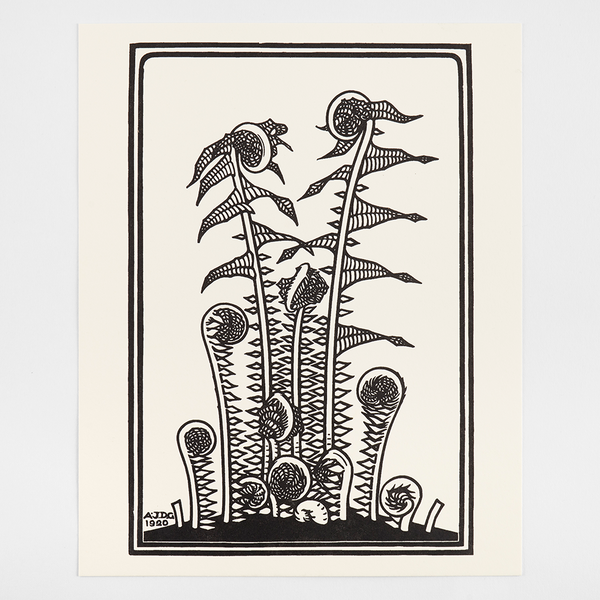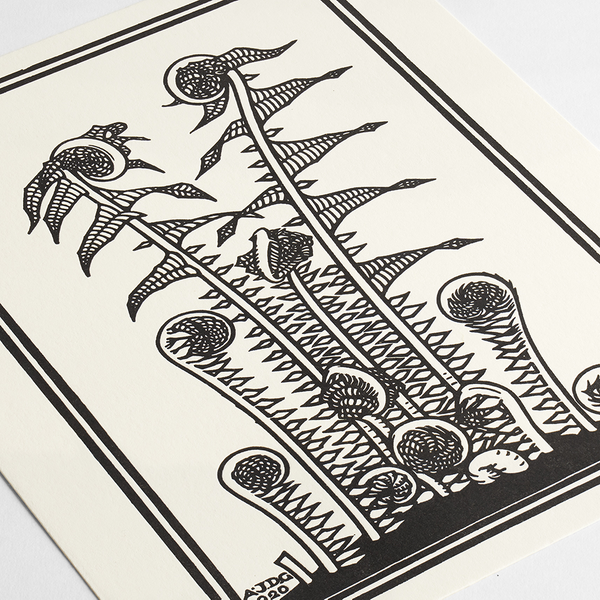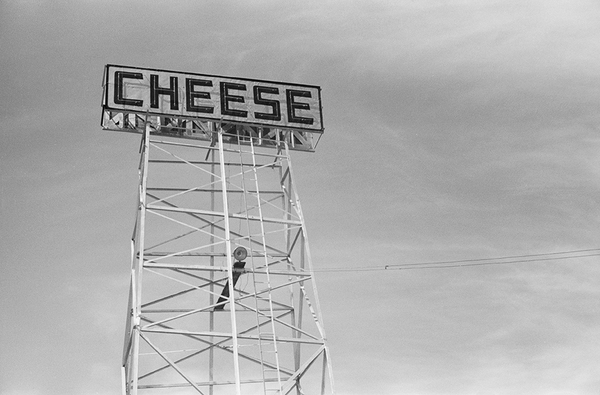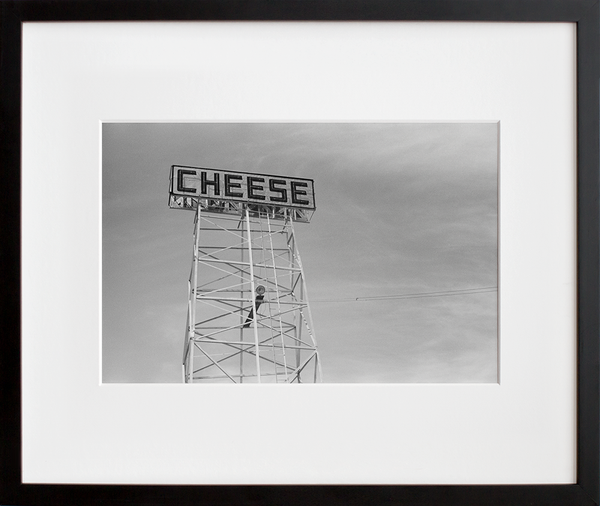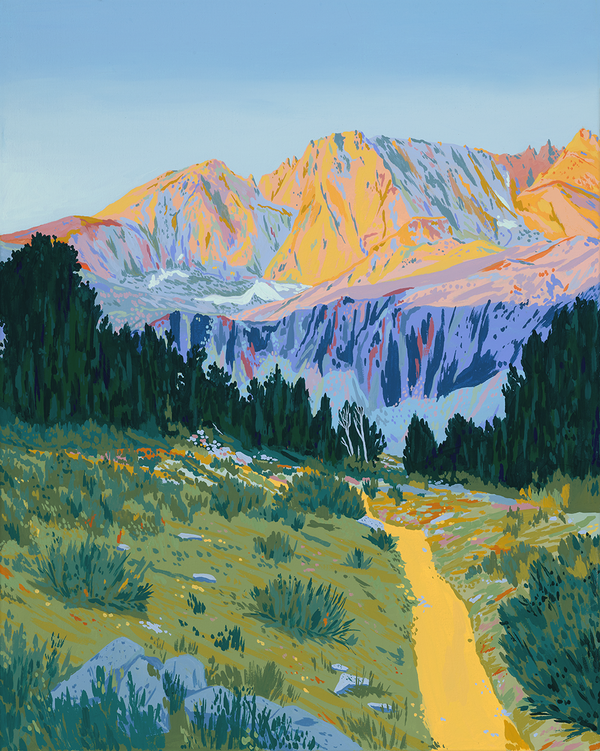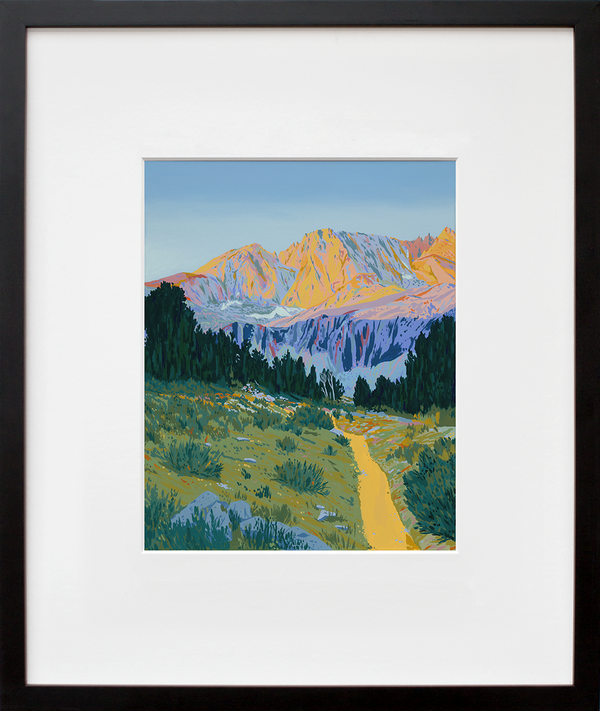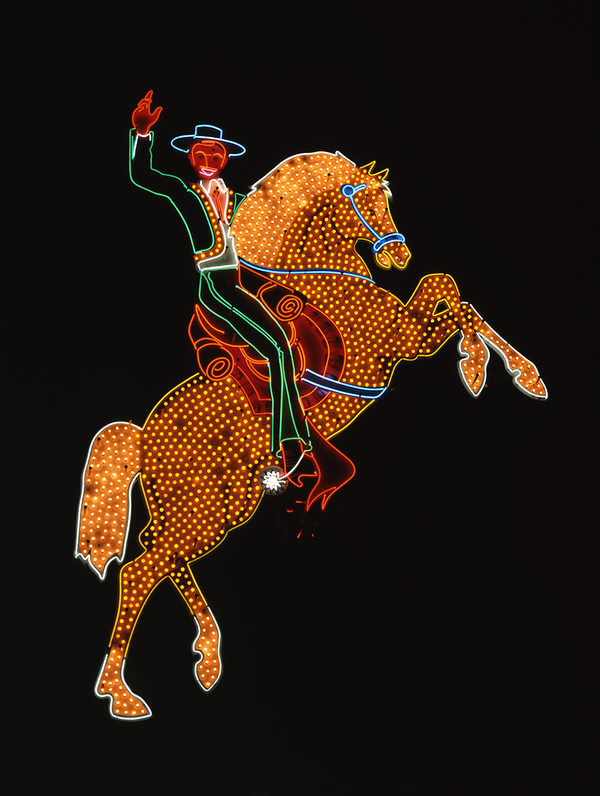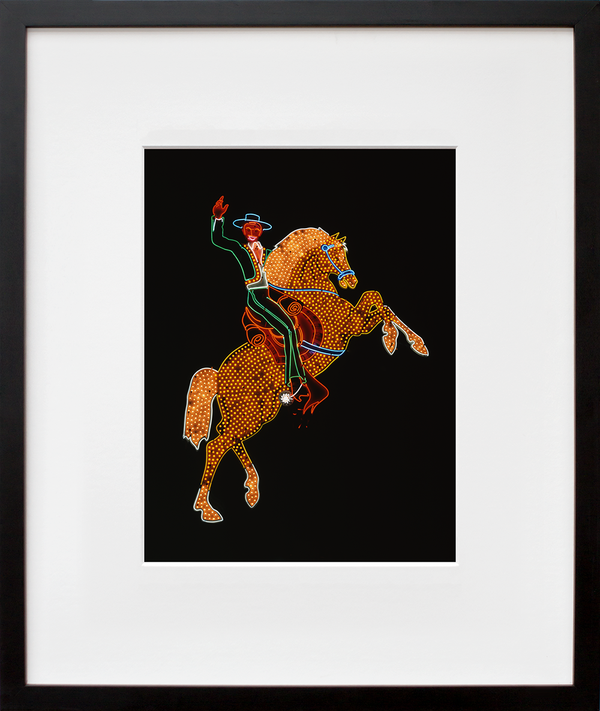If you've been following 20x200 for any time at all, you might know that we're a bunch of word nerds and history buffs. In general, we're curious about culture. We're the types who always have our noses glued to the window of a moving vehicle, watching the miles go by.
In a country built on highway infrastructure + staunch capitalism, signage carries a lot of weight: the challenge of asserting one message over the rest; freedom of expression and the right to protest; the American longing for individuality; the craft of hand-painting signs; the deliciousness of typographical diversity; the birth of the billboard and the history of the American highway system. Not to mention, the nostalgia attached to the first Waffle House sign for hundreds of miles—or the relief at finally seeing "Motel Vacancy" glowing around the curve of the freeway (is this a shared experience?). Or maybe just the simple fact that this is an expansive country, and you need a little guidance to get from one side to the other.
Hacienda Horse and Rider, historic neon sign, Las Vegas, Nevada is signature Highsmith. Her subject, a publicly viewable physical landmark that she knew was a disappearing kind of classic Americana, rears high in the sky above the madding crowd. The pitch-black sky that comprises the background of her composition places the bucking bronco and its rider as a constellation; a pointillistic riot of neon shooting through space, telling a tale of a moment in time when this was the kind of iconography that America was wild for.
In I Am an American, Oakland, CA, March 1942, a banner boldly and proudly proclaims the citizenship of the shop's relocated Japanese American proprietors. These simple words become a deeply felt identification, a powerful protest, and a profound plea all at once. Lange has captured this so poignantly, with the business that the ambitious American's built dark and quiet below the bold contrast of the sign, shuttered by their own neighbors and country.
Opened in 1950, Gary’s Ice Cream was nearly 30 years old by the time Margolies photographed it on a Floridian road trip in 1979. Margolies took these trips to capture images of novelty architecture: the quirky, charming buildings he saw disappearing. His images were stark, deliberate, and colorful. His use of slide film lent to richer colors and more contrast, and his choice to shoot on clear, sunny days helped eliminate any visual distraction.
These road trips culminated in Margolies’ Roadside America collection, an archive of 100,000 miles and over 30 years of photographs—a toast to endearingly eccentric advertising and the waning art of the American pitstop.
Gordon Parks photographed a handful of images outside the Marcus Garvey club, but this shot is the only one that shows details of the actual space. In the window display, one can see articles, full publications, and a prayer for the president. Most prominent, however, is the portrait of Marcus Garvey, a Jamaican-born political leader, publisher, journalist, entrepreneur, orator and creator of the Universal Negro Improvement Association and African Communities League. As the head of the UNIA-ACL, he encouraged people of African origin to return to their homelands to redeem the countries by removing all Euro-centric white influence. While not all black leaders at the time agreed with him, his speeches and writings influenced many future leaders, including Dr. Martin Luther King, Jr.
With American highway culture still in its early days, farmers were among the first to utilize roadside advertising in a variety of ways. Vachon captured the essence of agricultural life in the midwest through thousands of images during his time with the Farm Security Administration.
This road sign appeared on U.S. 41 near Kenosha, Wisconsin—the cheesiest state of all. If you’ve been to that part of the country, you’ll know that cheese beacons pop up almost immediately after crossing the state line.























